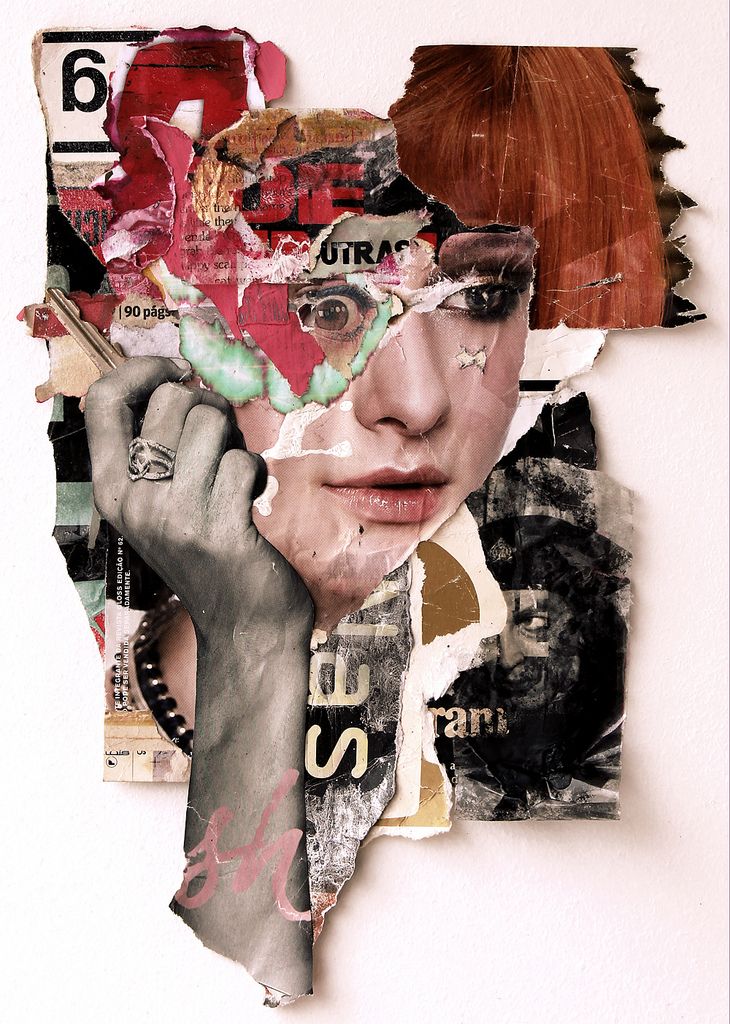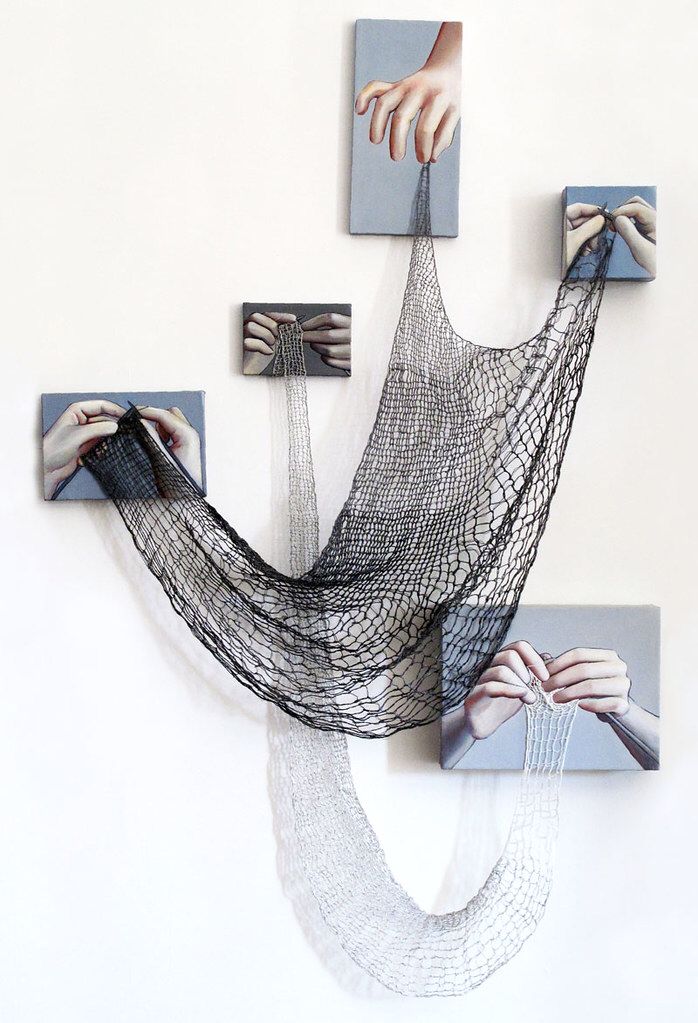Mixed media art refers to artwork that incorporates a variety of materials and techniques within a single piece. Artists often combine traditional mediums like paint, pencil, and ink with other materials such as fabric, different objects, metals, paper, wood, and even digital elements. This diverse approach allows for experimentation, layering, and texture, resulting in visually dynamic and conceptually rich creations.
One of the key aspects of mixed medium art is its flexibility and adaptability. Artists can freely explore different combinations of materials and methods, breaking away from the constraints of a single medium. This versatility enables them to convey complex ideas, emotions, and narratives, often blurring the boundaries between two-dimensional and three-dimensional art forms.
Mixed medium art encourages creativity and innovation, as artists constantly push the boundaries of what is possible. It embraces the notion that art is not confined to traditional norms or techniques but can evolve and transform through the fusion of diverse elements. As a result, mixed media artworks can vary greatly in style, from abstract and experimental to figurative and narrative-driven, reflecting the unique vision and expression of each artist.
History of Mixed Media
Mixed media art has a rich and varied history, spanning centuries and cultures. It’s the practice of using multiple materials or mediums within a single artwork, blending various elements like paint, paper, fabric, found objects, and digital media to create a cohesive piece.
The roots of mixed-medium art can be traced back to ancient times when artists experimented with different materials to express their creativity. In medieval manuscripts, illuminators combined text with intricate illustrations using gold leaf and pigments made from natural sources. During the Renaissance, artists like Leonardo da Vinci and Michelangelo incorporated various materials into their work, such as chalk, ink, and charcoal, to achieve depth and texture.
The 20th century saw a surge in mixed media experimentation, driven by movements like Dadaism and Surrealism. Artists like Marcel Duchamp challenged traditional notions of art by incorporating everyday objects into their work, blurring the lines between art and reality. The collages of Pablo Picasso and Georges Braque further pushed the boundaries of artistic expression, as they combined different materials to create dynamic compositions.
In the mid-20th century, the rise of assemblage art brought new possibilities for mixed media. Artists like Joseph Cornell and Robert Rauschenberg created three-dimensional artworks by combining found objects with traditional art materials. Pop artists like Andy Warhol embraced mixed media techniques, using screen printing and collage to explore mass production and consumer culture.
Contemporary mixed media artists continue to push the boundaries of the medium, incorporating digital technologies and unconventional materials into their work. From intricate scrapbook-style collages to immersive installations, mixed media art reflects the diversity and complexity of the modern world, inviting viewers to engage with art in new and exciting ways.

Mixed Medium Art Process
Mixed media art involves the use of various materials and printing techniques to create a single artwork. Printing in mixed media often combines traditional printing methods like relief printing, intaglio printing, screen printing, or lithography with other artistic elements such as painting, collage, drawing, or digital manipulation.
Here’s a brief explanation of the printing process in mixed media art:
Preparation
The artist begins by preparing the surface on which the print will be made. This could be paper, canvas, wood, or any other suitable material. The surface may be primed or treated to achieve the desired texture or finish.
Selection of Printing Method
The artist selects the printing method based on the desired effect and the materials at hand. Relief printing involves carving a design onto a block, applying ink to the raised surface, and transferring it onto paper by pressing or rolling. Intaglio printing involves incising the design into a plate, filling the incisions with ink, and transferring the inked image onto paper under pressure. Screen printing utilizes a mesh screen to transfer ink onto a surface by passing it through areas that are not blocked.
Creation of Printing Plates or Screens
If using relief or intaglio printing, the artist creates printing plates or blocks by carving or etching the design. For screen printing, a screen with the desired design is prepared by blocking out areas where ink should not pass through.
Inking
The artist applies ink to the printing plates or screens using brushes, rollers, or squeegees. Different colors can be used, and layers of ink may be applied to achieve depth and complexity.
Printing
With the printing plates or screens prepared and inked, the artist transfers the design onto the chosen surface. This can be done manually or with the aid of a printing press, depending on the method used.
Additional Techniques
After the initial print is made, the artist may further enhance the artwork using additional mixed media techniques such as painting over the print, adding collage elements, or incorporating digital elements.
Finishing Touches
Once the desired effect is achieved, the artist may finish the artwork by varnishing, framing, or otherwise preparing it for display.
Mixed Media Techniques
Mixed media art is a versatile and dynamic form of artistic expression that involves the combination of various materials and techniques to create a single piece of artwork. By combining various printing methods with other artistic techniques, mixed media artists can create unique and visually captivating artworks that blend different textures, colors, and dimensions.
Here are some key techniques used in creating art with mixed media:
Mixed Media Collage Art
Collage is a fundamental technique in mixed media art, involving the arrangement and layering of different materials such as paper, fabric, photographs, and found objects onto a surface. Artists use adhesive to affix these materials, creating texture and depth.
Assemblage
Assemblage involves the construction of three-dimensional artworks by assembling found objects and materials into a cohesive composition. Artists may use a variety of techniques including welding, glueing, and stitching to create their sculptures.
Painting
Painting is often combined with other materials in mixed media art. Artists may use acrylics, oils, watercolors, or spray paint to create layers of color and texture on surfaces such as canvas, wood, or paper.
Drawing
Drawing techniques such as pencil, ink, charcoal, or pastels can be incorporated into mixed media artworks to add detail, texture, and definition to the composition.
Printmaking
Printmaking techniques such as reduction, etching, lithography, or screen printing can be integrated into mixed media art to create unique textures and patterns on various surfaces.
Texturizing
Artists may employ various methods to add texture to their artworks, including the use of texture pastes, gels, or molding compounds. These materials can be applied with brushes, palette knives, or other tools to create raised surfaces and interesting textures.
Layering
Layering is a fundamental aspect of mixed media art, where artists build up layers of different materials and techniques to create depth, visual interest, and complexity within their compositions.
Experimental Techniques
Mixed media artists often experiment with unconventional materials and techniques, such as encaustic wax, resin, or digital elements, to push the boundaries of traditional artmaking and create innovative and unexpected results. By combining these various techniques, artists can create richly textured and visually captivating artworks that blur the boundaries between different art forms and mediums.
